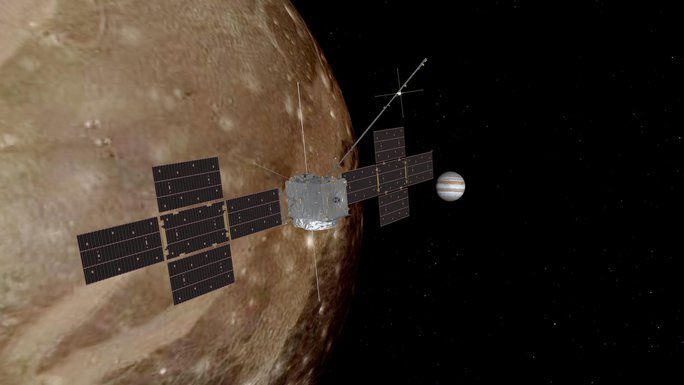The European Space Agency (ESA) is set to mark a significant milestone in the exploration of other planets this April by launching the JUICE spacecraft, which will use Venus as a gravity assist to travel to Jupiter.
Scheduled to launch at 9:15 AM local time on April 13 from the Guiana Space Centre in Kourou, French Guiana, the JUICE spacecraft is currently encapsulated in an Ariane 5 rocket, the same type used to launch the James Webb Space Telescope.
This launch time corresponds to 7:15 PM on April 13 and will be streamed live on the ESA website (esa.int).

JUICE spacecraft set to embark on its journey to Jupiter in the coming days – (Graphic image from ESA)
According to Space, JUICE will perform a flyby of Venus, Earth, and the Moon to gain momentum before heading directly to the distant Jupiter.
To ensure a successful gravity assist, ESA has calculated the spacecraft’s trajectory to take place when Venus, Earth, and the Moon align this April and again later this summer, which are the only two times this year when these three celestial bodies will be in line.
The only obstacle to the launch day is the possibility of poor weather, with a 76% chance of rain, but typically this does not pose significant challenges. If the mission is delayed, ESA will have to attempt to launch JUICE in the following month with some adjustments to its trajectory, or wait until April next year.
JUICE, a spacecraft that ESA has been preparing for many years, is equipped with 10 solar panels sufficient for long-term operations in the sunlight-scarce environment of Jupiter.
Its mission is to collect data on the magnetic field of the largest planet in the Solar System, as well as its three famous “ocean moons”: Ganymede, Callisto, and Europa.
These are three of Jupiter’s largest moons, discovered by scientist Galileo Galilei in the 17th century, along with the volcanic moon Io, collectively known as the Galilean moons.
Except for Io, which resembles a hellish landscape due to its intense volcanic activity, the other three moons identified by the Italian scientist are believed to possess elements that could support life in a potential subsurface ocean beneath their icy crusts.
Evidence of potential life has been discovered by NASA’s Juno spacecraft, which has been exploring Jupiter since its launch in 2009. The American space agency is nearly certain that Europa harbors life and is also preparing to launch the Europa Clipper mission in October 2024 to study this moon specifically.
ESA’s involvement, as a regular partner of NASA, promises to bring additional groundbreaking discoveries about Jupiter and its ocean-bearing moons.





















































